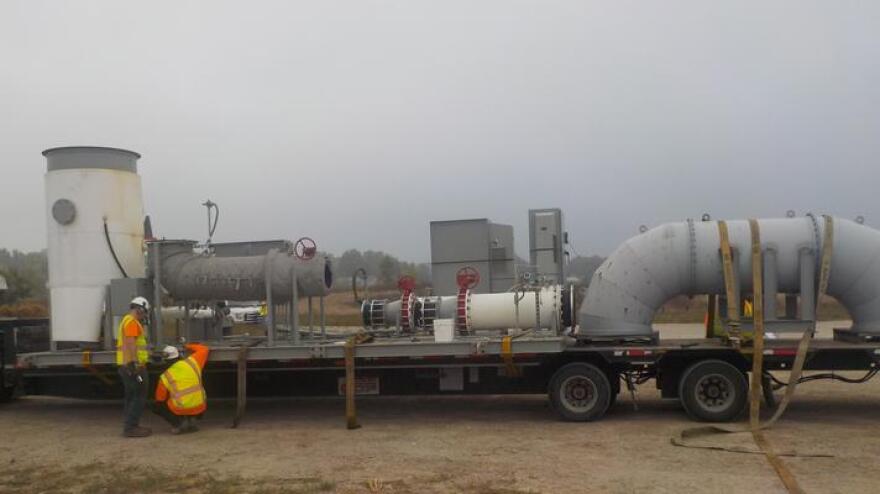This transcript has been lightly edited for clarity and length. Listen to this story by clicking the LISTEN play button above.
David Nicholas: Cleanup efforts continue with the former Velsicol chemical site in St. Louis, Michigan. Each day, 20,000 gallons of contaminated water is removed from the Pine River and containing the toxins that still leak from the site 45 years after the plant closed remains a challenge. I had a chance to talk recently with Brian Bienkowski, he's managing editor of The New Lede about the latest work to block the contaminants from the water.
Brian Bienkowski: They're also in the in the process of building a metal wall that is placed in between the Pine River and the and the former Vesical chemical plant site, which is to replace a slurry wall that was put in place by Velsicol that failed repeatedly over the years and was continuing to leak hazardous chemicals into the river so that work is ongoing right now. And then there's just the ongoing work of treating chemicals in the soil and groundwater at both the Superfund site and then a burn pit off-site where they would burn hazardous chemicals. And you know, this work has been going on for years, David, as you know, so a lot of this federal money continues to kind of hit these same hot spots that continue to have these hazardous chemicals within them.
DN: Here into 2025, as these efforts that you just described continue, what is the current status of that funding under the Trump administration? Has there been a direct callback or potential callback to the funding that was already set aside by the Biden administration last year?
BB: So the Super Fund funds specifically have not been pulled back by the Trump administration yet, so that money continues to flow to Saint Louis and other communities across the country dealing with this. So the Trump administration right now, in their 2026 budget, is calling for a over $250 million cut to the Super Fund funding, and kind of a broader 55% reduction in the EPA's budget. So it kind of remains to be seen if money will keep flowing. But as of right now, I talked to contractors on the ground; they are continuing with their work and the money is still showing up. So the folks in Saint Louis, you know, they're still on a 8-to-15-year timeline just to complete cleanup of the Superfund site where the chemical plant was, and that doesn't include the burn pit and the Pine River. So this is still a long-term project, you know, more than $100 million has been spent on this site to-date already, so you know it's unclear what kind of funding cuts would, how it would impact the site, but as of right now, contractors on the ground and the EPA is kind of operating under the plans that they that they had for 2025.
DN: If they can close off that source of contamination and continue the treatment on the water, then does the attention as you understand it, then shift to the burn pit next?
BB: Well, they've been focusing on the burn pit. Throughout the burn pit is a mess, David. I mean, it is the level of contamination that they found there was, you know, off the charts. You know, I was talking to a contractor on the ground there off the record. And you know, he seems to think that is a site that will -- nothing will live there after this is all said and done. That is not something that will be redeveloped, so they're they continue to work at the burn pit throughout this and you know, it's tricky. So you put in this wall around the former plant site and as you said, that should kind of close things off, but you know, there's groundwater seepage and as we all know, water kind of finds a way. So I mean, I think people are cautiously optimistic that this will really turn off a lot of the contaminant tap so to speak, but it's not a foolproof solution.
DN: And we certainly do appreciate your reporting on this, Brian, and we hope we'll have a chance to talk again, but thanks very much for the update on what you found.
BB: Thanks so much for your time. I really enjoyed this.
DN: Brian Bienkowski is managing editor of The New Lede, spoke with him recently about the cleanup efforts at the former Velsicol site in Saint Louis, along the Pine River.


